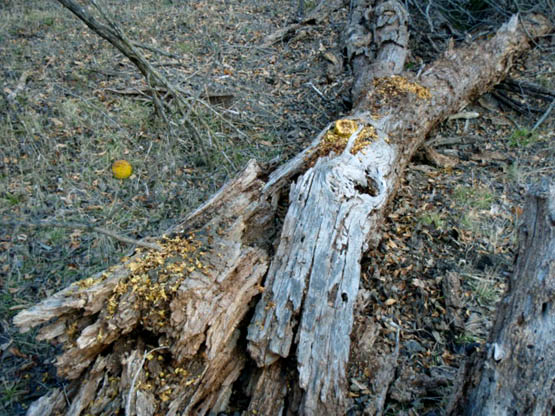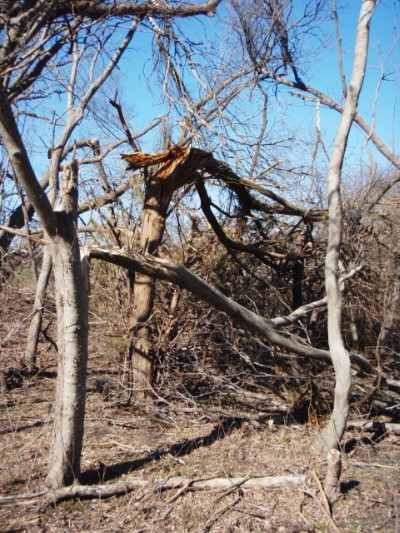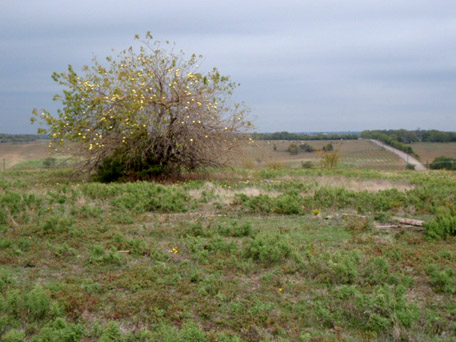
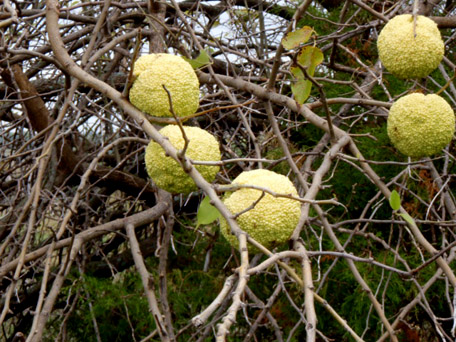
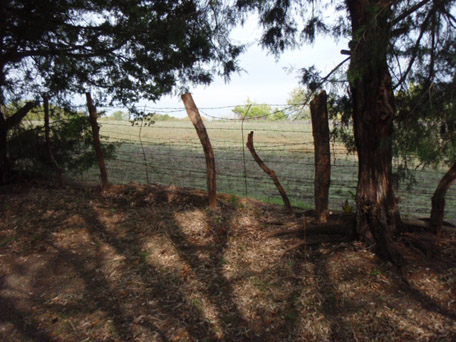
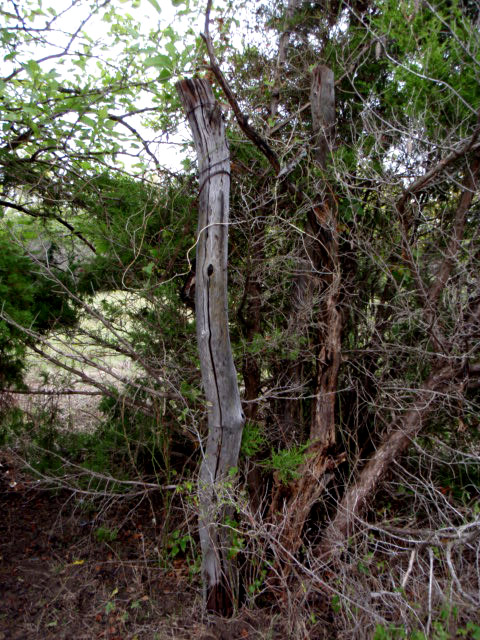
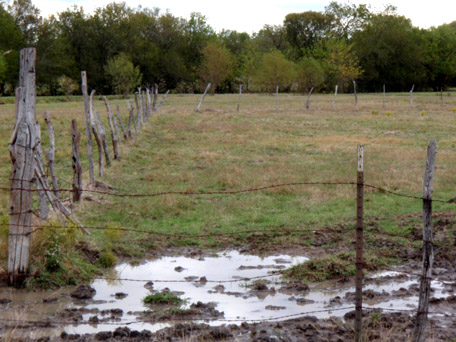
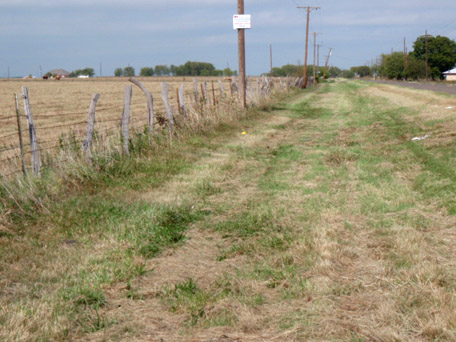
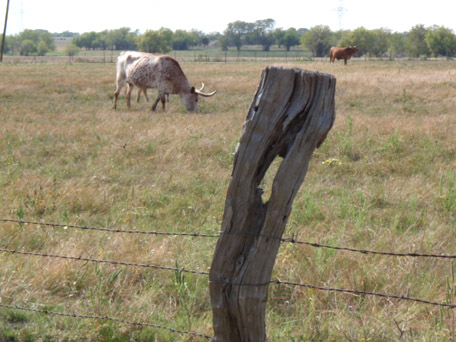
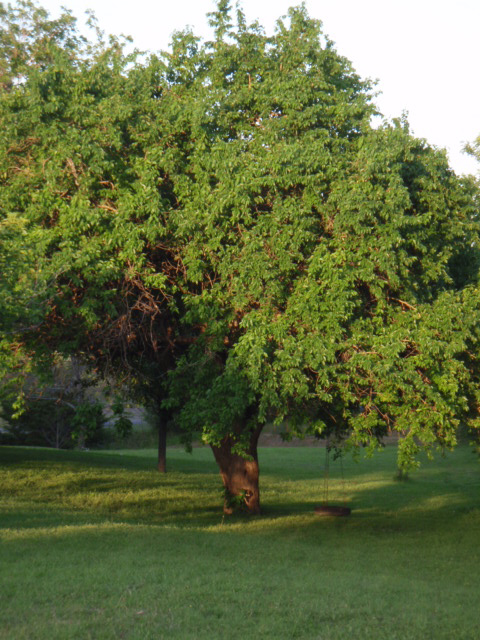
Bois d'Arc, Bodark, Osage Orange, Horse Apple, Hedge Apple. Pronounced boe' dark. Scientific name Maclura Pommifera. Native habitat is in Arkansas, North East texas, and Southern Oklahoma.
The name "Bois d'Arc" means, in French, "wood" (bois) "of bows" (d'arc.) The proper French pronunciation of "bois" would be "bwa" but the term was coined here in North America by early French speaking explorers making their way into what is now East Texas, Arkansas, and Southeastern Oklahoma and like many words the pronunciation became corrupted. The "wood of bows" was used by Osage, Caddo, and other native Americans to make their archery bows. The wood is very strong, hard, and springy and durable and is ideal for this purpose.
As white settlers moved into the area they began planting the seeds into hedgerows, intertwining the branches as the trees grew. Bois d'Arc hedges were said to be "horse high, bull strong and hog tight."
With the introduction of barbed wire, the hedges fell out of favor, but Bois d'Arc found a new use as fenceposts. The wood is extremely resistant to rot and insect attack, and fenceposts can be expected to last well over 50 years, and some have been reported to be about 100 years old.
Another use that relies on the wood's longevity is foundation posts for houses. Many old houses in this area are still sitting on Bois d'Arc posts.
My first experience with the wood came about 16 years ago, when I helped a neighbor clean out a stretch of fenceline. I brought the old, weathered posts home thinking to use them in landscaping projects. When I made a small footbridge using some of these posts to support the rails I realized how attractive the wood is when you cut down into the heart of it. A few years later, when I had a shop and the necessary tools, I began working with some of these old fenceposts, and only then did I realize the beauty that lurks just beneath the surface of an old, cracked and weatherbeaten, mundane and forgotten fencepost.
